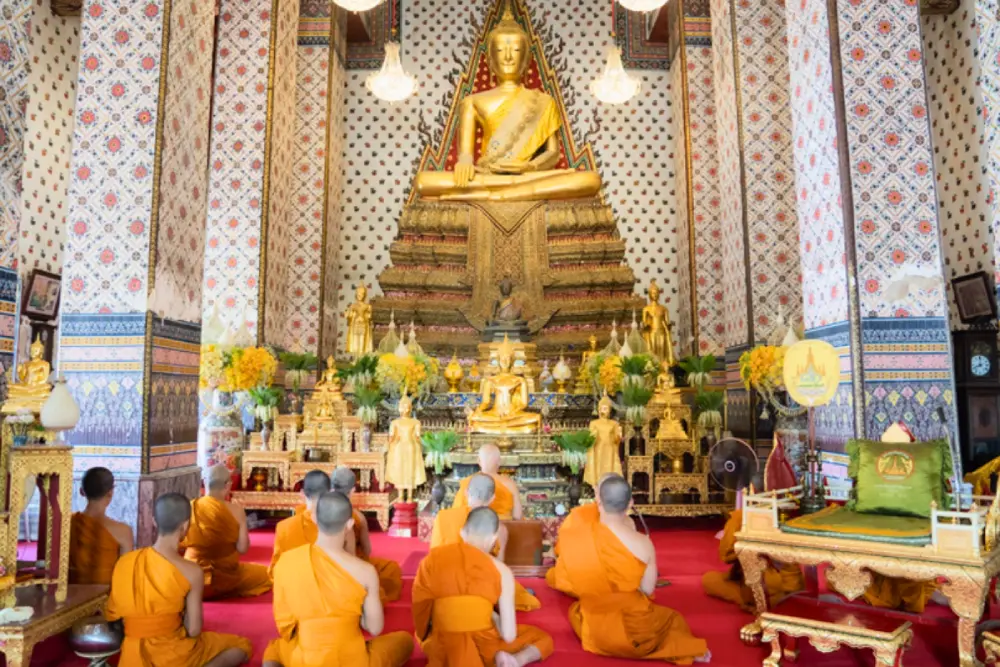When you travel the world and strike a balance between job and adventure, do you ever find yourself yearning for deeper experiences and connections?
Table of Contents
The journey for digital nomads involves more than just discovering the next fantastic workspace—it also entails fully immersing oneself in the place’s history and culture.
Key Highlights
- Bangkok’s temples offer a unique blend of cultural and spiritual experiences, essential for understanding Thailand’s rich heritage.
- Each temple offers unique architectural wonders and historical significance, from the famous Emerald Buddha at Wat Phra Kaew to the tranquil Wat Arun along the river.
- Visitors can attend meditation sessions, especially at Wat Mahathat Yuwaratrangsarit, which provides a more in-depth cultural experience for digital nomads.
- A few temples are particularly noteworthy: Wat Pho, with its renowned schools; Wat Benchamabophit, with its Italian marble architecture; and Wat Traimit, home to a solid gold Buddha weighing five thousand kilograms.
- In addition to being places of worship, the temples are hubs for history, education, and the arts, offering a comprehensive cultural experience.
- For digital nomads looking for the ideal balance between work, travel, and personal growth, exploring the temples enriches one’s journey to Bangkok.
Must-Visit Temples in Bangkok
With its constantly bustling streets and tranquil temples, Bangkok presents a unique fusion of modernity and history that can profoundly enrich one’s travel experience.
Join us as we explore Bangkok’s Must-Visit Temples, the city’s most iconic and spiritually significant sites.
Bangkok’s temples, ranging from the majestic Wat Phra Kaew to the serene Wat Arun, provide a different window into the country’s rich religious traditions and legacy.
Whether you’re looking for a quiet place to reflect or seeking to understand the cultural fabric of this vibrant city, these temples are essential stops on your journey through Bangkok.
Let this article be your comprehensive resource as you explore these spiritual havens, each a testament to Bangkok’s enduring allure.
1. Wat Pho

Wat Pho is also officially known as the Wat Phra Chetuphon Wimon Mangkhalaram Rajwaramahawihan (whew, what a mouthful!). It is one of Bangkok’s most significant temples. The temple is named after the monastery where Buddha lived in India.
The temple covers an area of about 80,000 square meters. It houses Thailand’s iconic giant reclining Buddha with an incredible dimension of 46 meters long and 15 meters tall.
Wat Pho is right next to the Grand Palace and has over 1,000 Buddha images and 91 chedis (stupas).
The temple is also popularly known as the earliest public university in Thailand. It used to conduct science and literature lessons earlier but currently only runs a massage and natural medicine school.
2 Sanam Chai Rd, Phra Borom Maha Ratchawang, Phra Nakhon, Bangkok 10200, Thailand
+66 83 057 7100
2. Wat Phra Kaew
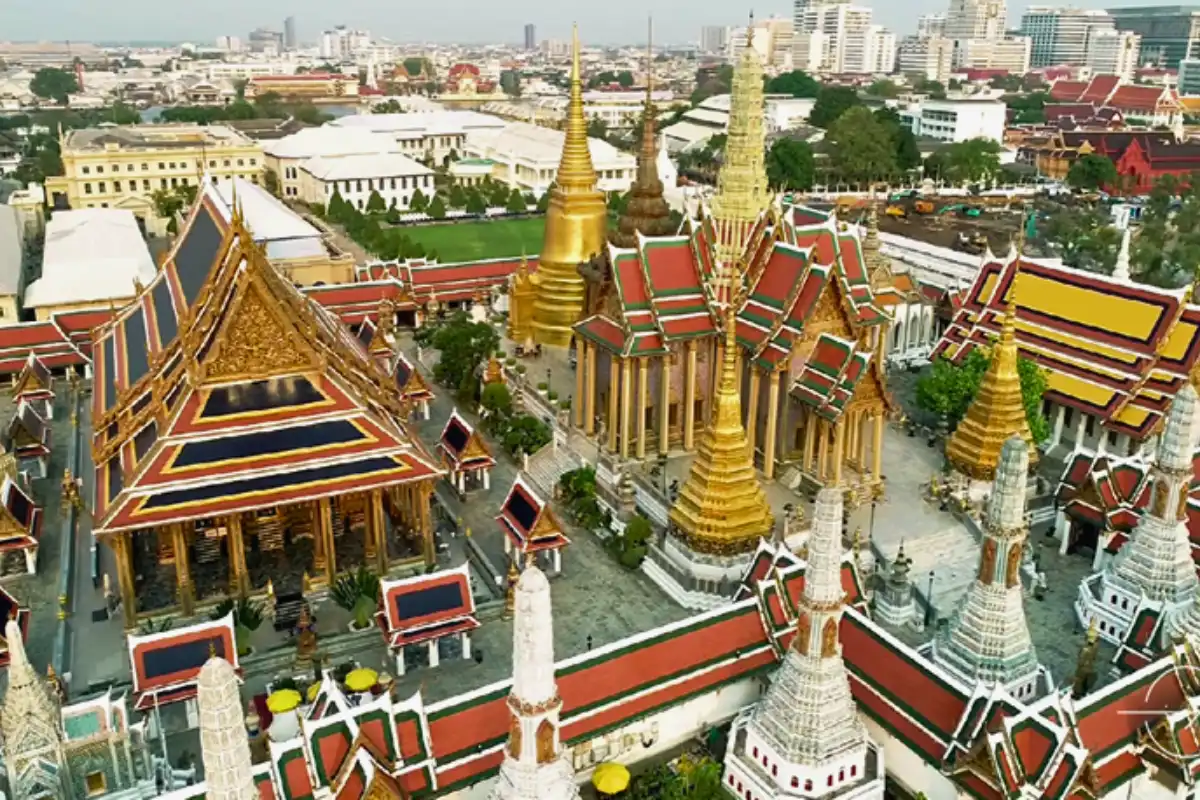
Wat Phra Kaew is officially known as Wat Phra Si Rattana Satsadaram. In English, it is also popularly called the Temple of the Emerald Buddha.
It is one of Thailand’s most important and famous temples, partially because it has been the home of the Emerald Buddha since the 1700s.
The statue is revered with high significance as it symbolizes the king’s power and authority. The Emerald Buddha is also said to protect the nation.
The temple features a fascinating gallery that stretches for about 2km. It is lined by detailed mural paintings depicting the 178 scenes of the epic story of the Ramayana.
The gallery portion of the temple is my favorite spot in Wat Phra Kaew. I highly encourage my fellow digital nomads with a deep love for the arts and literature to visit it.
The temple is only open until 3.30 pm, and entrance costs at least 500 baht for non-Thai citizens.
QF2V+M34, Na Phra Lan Rd, Phra Borom Maha Ratchawang, Phra Nakhon, Bangkok 10200, Thailand
+66 2 623 5500
3. Wat Arun
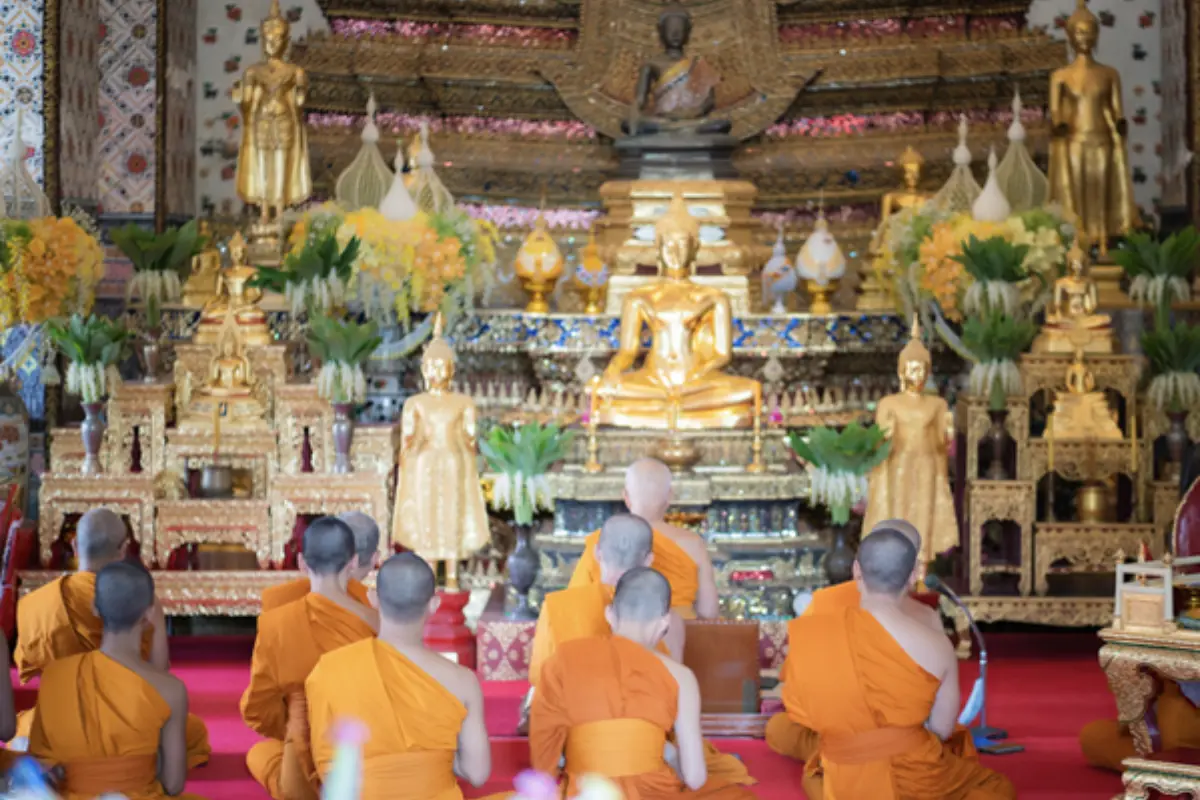
Wat Arun, officially Wat Arun Ratchawararam Ratchawaramahawihan, was established to pay homage to the Hindu god Aruna.
Aruna is associated with the rising sun, so it is also known as the “temple of dawn.”
The temple is famous for its distinct architectural design and picturesque riverfront location. To reach Wat Arun, you can catch a boat from Wat Pho Temple and get off at Wat Arun, right across the river.
The trip to the temple itself is exciting, but visiting it during sunrise or sunset is even more amazing. To get the best view of the temple, you will have to climb the central prang.
158 Thanon Wang Doem, Wat Arun, Bangkok Yai, Bangkok 10600, Thailand
+66 2 891 2185
4. Wat Benchamabophit Dusitwanaram

Wat Benchamabophit Dusitwanaram is also known as Wat Benja by Thai locals. It is also referred to as the Marble Temple of Bangkok since its external walls are made of Italian marble.
Fun fact: The Wat Benchamabophit Dusitwanaram is the very temple engraved on the back of the 5 Baht coin.
The temple combines beautiful golden and red and is quieter than other temples in Bangkok.
The temple’s main attraction is the 52 Buddha images surrounding the assembly hall. King Chulalongkorn collected the statues.
69 Thanon Si Ayutthaya, Dusit, Dusit District, Bangkok 10300, Thailand
+66 98 395 4289
5. Wat Saket
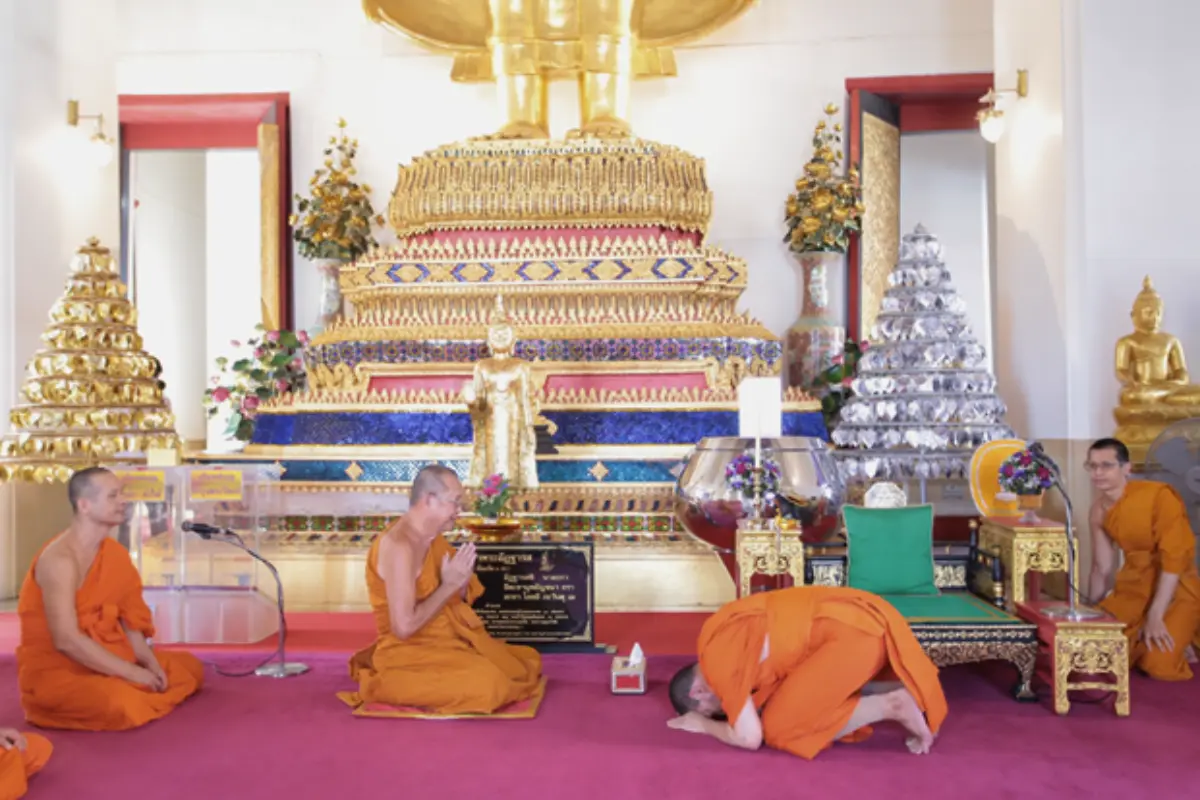
Wat Sa Ket Ratchaworamahawihan, or Wat Saket in short, is situated on top of an 80-meter-high hill in the heart of Bangkok. Hence, it is referred to as The Golden Mount.
The temple should be on top of your must-visit list if you are a nomad with a flair for adventure. You must climb 300 gold and red steps to get to the main building.
It is quite a challenge, but at the same time, the repetitive steps also feel like meditation.
At the base of the Golden Mount is a cemetery covered in vines and overgrown trees.
The temple is also famous for its two annual festivals in November. Both these festivals include candlelight prayer and celebration.
344 Thanon Chakkraphatdi Phong, Ban Bat, Pom Prap Sattru Phai, Bangkok 10100, Thailand
+66 65 626 3553
6. Wat Traimit
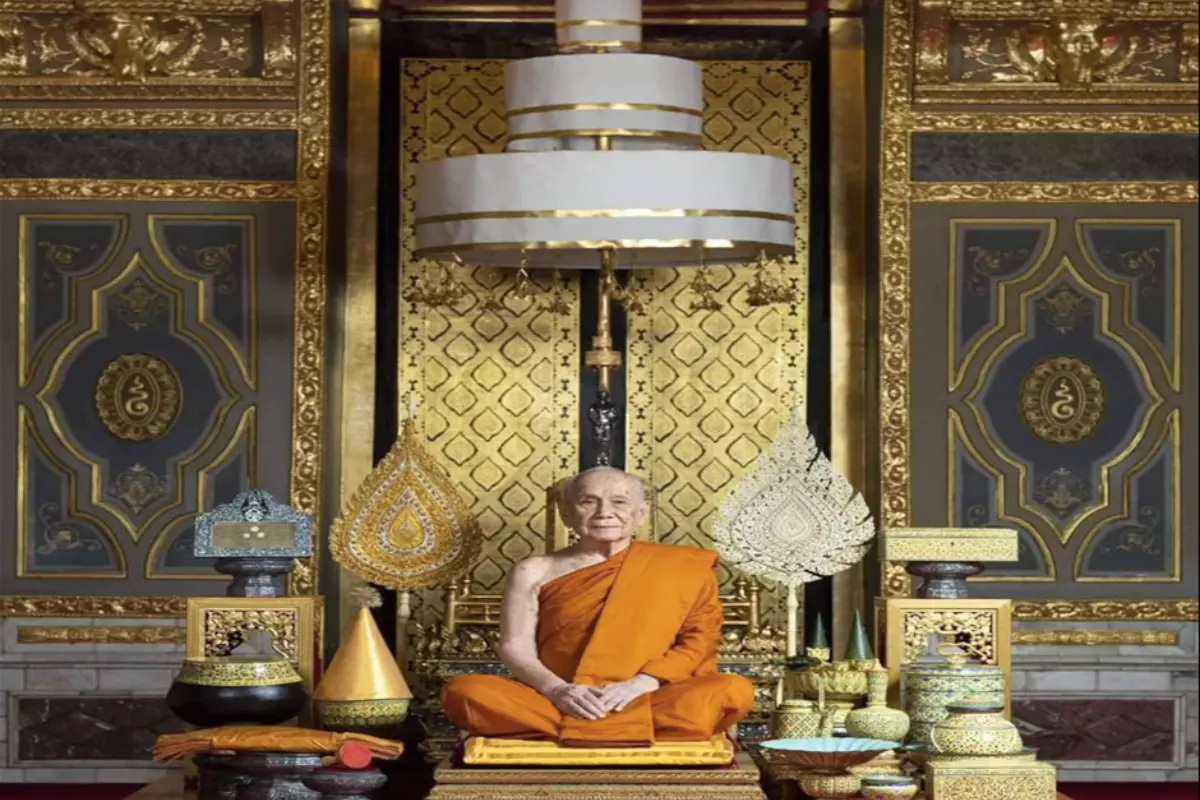
Wat Traimit, officially Wat Trai Mit Witthayaram Worawihan, is another very popular temple in Bangkok. It was named after the three Chinese friends who founded it during the reign of King Rama III.
On the second floor, you can watch 3D presentations detailing the history of the Chinese traders in Bangkok.
There is a museum on the third floor of the temple complex where you can see a video presentation that provides first-hand and in-depth information about the temple’s history.
However, the temple is most famous for its iconic 5,500-kilogram statue of a seated Buddha made of gold. The current value of the Buddha statue is said to be $250 million.
661 Charoen Krung Road, Talat Noi, Samphanthawong, Bangkok 10100, Thailand
+66 89 002 2700
7. Wat Mahathat Yuwaratrangsarit

Wat Mahathat Yuwaratrangsarit features the ten royal temples used for royal ceremonies of the highest class in Bangkok.
The temple is centrally located in the 290-hectare historical park and is popular among history and archaeology enthusiasts.
One of the main attractions of this place is the famous Buddha’s head embedded in a tree trunk and surrounded by its roots.
Wat Mahathat is also home to the oldest higher education institute for Buddhist monks in Thailand and an important center for studying Meditation and Buddhism, the International Vipassana Meditation Center.
For digital nomads who want a more immersive experience, make sure to attend one of the temple’s Vipassana meditation training and development sessions.
3, 5 Tha Suphan Alley, Phra Borom Maha Ratchawang, Phra Nakhon, Bangkok 10200, Thailand
+66 2 222 6011
8. Wat Suthat
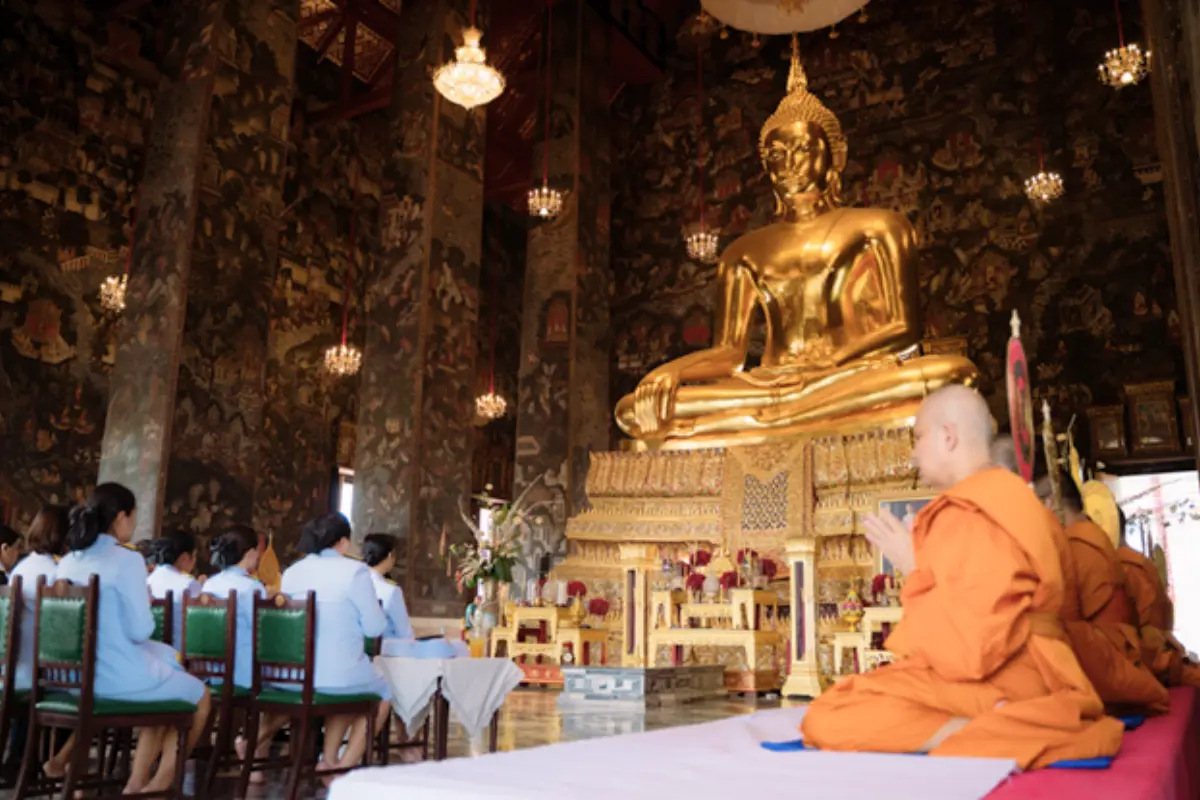
Wat Suthat Thepwararam, or Wat Suthat in short, is an impressive temple in Bangkok popular for its giant swing.
The giant red swing, or Sao Ghingcha, is 21 meters in height and built entirely of teakwood.
The temple features a mesmerizing chapel with a sweeping roof, magnificent wall murals, and exquisite hand-carved teakwood door panels.
To get the most out of your escapade, it is best to plan a combined trip since the temple is close to Emerald Buddha, the Grand Palace, and Wat Pho.
146 Bamrung Mueang Rd, Wat Ratchabophit, Phra Nakhon, Bangkok 10200, Thailand
+66 63 654 6829
9. Wat Prayoon

Wat Prayoon, officially Wat Prayurawongsawat Worawihan, is a small white temple on the western side of the Chao Praya River. It is also commonly referred to as Wat Rua Lek.
The temple has a large, inverted bell-shaped chedi (pagoda) that is 80 meters tall and houses some very ancient Buddha relics.
Wat Prayoon is surrounded by gardens, turtle ponds, and housing spirit houses. Visitors can feed the turtles in the pond.
The temple has a unique bright red iron fence built using ancient weapons as the primary raw material.
24 Prajadhipok Rd, Wat Kanlaya, Thon Buri, Bangkok 10600, Thailand
+66 2 466 1693
10. Wat Suwannaram

Wat Suwannaram is officially named Wat Suwannaram Ratchaworawihan. Earlier known as Wat Thalong, this temple ground served as an execution ground during the war with Burma.
After that, it became a crematorium for members of the royal family.
In the 18th century, Lord Rama ordered its restoration, and since then, it has been popularly known as Wat Suwannaram.
The most attractive part of the temple is the giant golden Buddha and the red murals that embellish the walls and ceilings.
There is a small pond at the center, which is a tiny magical library.
Soi Charansanitwong 32 Siriraj, Bangkok Noi, Bangkok 10700, Thailand
11. Sri Mahamariamman Temple

Sri Maha Mariamman Temple, or Wat Khaek, is Bangkok’s most impressive Hindu temple. It was built near the end of the 19th century with a striking facade of colors and shapes.
The temple’s most distinctive feature is the six-meter-tall gopura at its entryway. It has intricate carvings depicting various Hindu deities.
The architecture is strikingly gorgeous and vibrant. AMAZING!
The temple has a main hall where the statues of Ganesh, Krishna, Shiva, and Vishnu are placed.
You can pay your respects and homage by offering flower garlands, incense, and fruits or sweets. You can buy them from the many shops around the temple.
2 Pan Rd, Bang Rak, Bangkok 10500, Thailand
+66 97 315 9569
12. Wat Kanlayanamit Woramahawihan
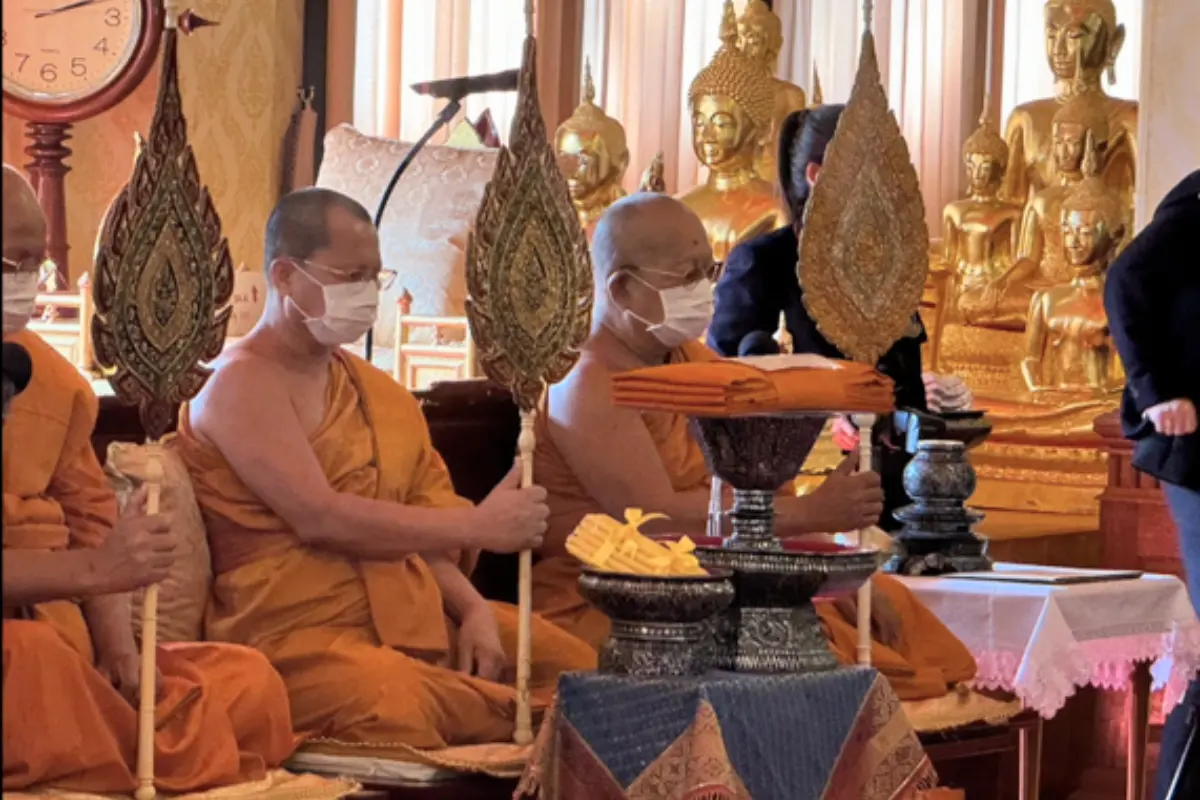
Wat Kanlayanamit Woramahawihan is located across the Chao Phraya, next to Wat Arun. It is so vast that you cannot help but notice it if you pass that way.
In the main hall, you will find a 50-foot-tall Buddha image in the subduing Mara pose, with its left hand lying palm upwards in its lap.
It has one of the tallest ordination halls in Thailand.
Built in the 19th century, Wat Kanlayanamit Woramahawihan has a rich history and has since attracted tourists from various places to pay their respects, adding to its historical significance.
There are no entry fees here.
371 Soi Arun Amarin 6, Wat Kanlaya Subdistrict, Thon Buri, Bangkok 10600, Thailand
+66 96 362 5354
13. Wat Bowonniwet Vihara

Wat Bowonniwet Vihara, or the Bowonniwetwiharn Ratchaworawiharn Temple, is an ancient temple in the Phra Nakhon district dating back to 1926.
Also known as Wat Bowon, it is also popularly called the national headquarters of the Thammayut order. This sect refers to Thai Buddhism.
Many kings of Thailand were monks and abbots here, such as King Rama IV and King Bhumibol.
The temple depicts 19th-century Western Thai life and is home to some noteworthy murals.
248 Phra Sumen Rd, Wat Bowon Niwet, Phra Nakhon, Bangkok 10200, Thailand
+66 2 629 5854
14. Wat Chana Songkhram

Wat Chana Songkhram Ratchaworamahawihan, or Wat Chana Songkhram in short, was initially known as Wat Ratchaburana.
One of the most striking features of this temple is its large Sri Lankan-style bell-shaped chedi, which is located in Sukhothai.
Just north of this temple in Bangkok is the monument of King Ramkamhaeng, which is very popular among the locals.
Wat Chana Songkhram is close to Bangkok’s famous attractions, such as Rambuttri Road and Khaosan Road.
If you visit the temple, make sure to drop by these spots to make the most of your visit to these areas of Bangkok.
77 Chakrabongse Rd, Chana Songkhram, Phra Nakhon, Bangkok 10200, Thailand
+66 93 126 4000
15. Wat Paknam Bhasicharoen
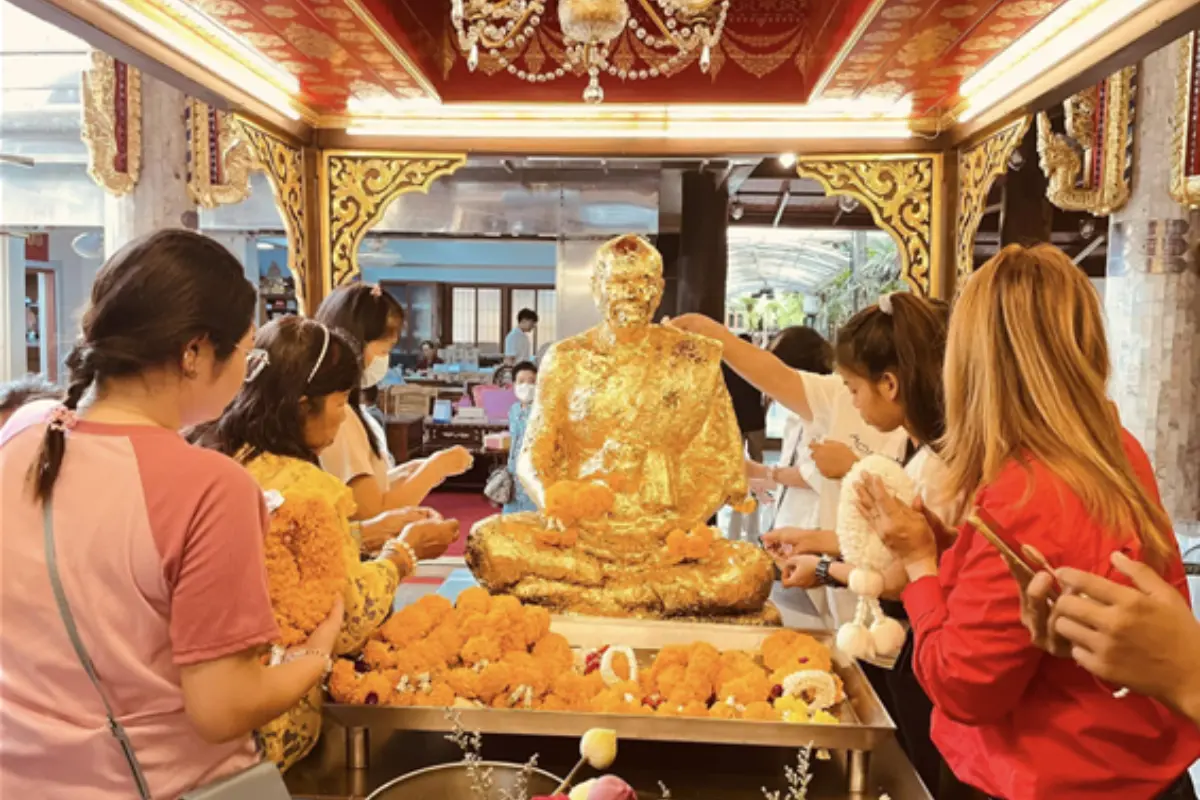
Wat Paknam Bhasicharoen is also known as Wat Paknam. This temple was built during the Ayutthaya period.
The temple is located near the famous Chao Phraya River in the Phasi Charoen district of Bangkok.
It enjoys the reputation of having the biggest Mae Chae community in Thailand. The reason mae chis (nuns) flock to this Wat is the meditation master Luang Pu Sod’s meditation policies that emphasize Buddhist and secular studies for them.
The main Phrarathchamongkhon Stupa of this temple is built entirely out of glass shards. In 2013, a new chedi and a stupa were added here.
I adore the temple’s gigantic golden Buddha statue. Its towering display as if oversees and graces the city with its presence and protection.
300 Ratchamongkhon Prasat Alley, Pak Khlong Phasi Charoen, Phasi Charoen, Bangkok 10160, Thailand
+66 2 467 0811
16. Wat Rakhangkhositaram

Wat Rakhangkhositaram is officially called Wat Rakhang Khositaram Woramahawihan. Wat Rakang, in short, is also known as the temple of bells.
This temple is less popular than the others on this list. Still, it is definitely worth a visit, especially if you have an eye for details and love peace.
The temple was built in the 18th century. It has five giant bells and a seated Buddha in the meditation position in the center.
The architecture is sublime, and the murals inside the ordination hall are noteworthy.
The locals believe that sounding the bells will bring them fame and a good reputation.
250 Arun Amarin Rd, Siriraj, Bangkok Noi, Bangkok 10700, Thailand
https://www.facebook.com/profile.php?id=100069254087755&mibextid=ZbWKwL
17. Wat Yan Nawa

Wat Yan Nawa, commonly known as “the boat temple,” is a prominent Buddhist temple on Charoen Krung Road in the Sathon district of Bangkok.
The temple dates back to the Ayutthaya Kingdom and was initially named Wat Kok Khwai, later renamed Wat Kok Krabue.
This unique temple is known for its viharn (assembly hall), which is constructed in the shape of a Chinese junk ship. It is designed with two chedis representing the masts and an altar symbolizing the wheelhouse.
This design is unique to the temple, leading locals to call it “sampao chedi.”
40 Charoen Krung Road, Yan Nawa, Sathon, Bangkok 10120, Thailand
+66 92 669 2516
Final Thoughts: Temples in Bangkok
As digital nomads, our journeys often take us to places rich in culture and history, offering more than just a workspace with a view.
Bangkok, a city that seamlessly blends modernity with tradition, is a perfect example of such a destination.
The “Top 17 Best Temples to Visit in Bangkok” guide is an invaluable resource for those who crave productivity and profound cultural experiences.
Must-Visit Temples in Bangkok
Every temple offers a different and remarkable experience, whether it’s the majestic Wat Phra Kaew, home to the famed Emerald Buddha, or the serene Wat Benchamabophit, renowned for its exquisite marble architecture.
Individuals with a strong interest in art and history should not miss the elaborate murals of Wat Phra Kaew and the tranquil meditation areas of Wat Mahathat Yuwaratrangsarit.
When you explore Bangkok’s temples, you’ll discover that they offer more than stunning architecture. They provide a place of introspection, appreciation of culture, and a more thorough knowledge of the area’s way of life.
This blend of spiritual and cultural exploration is an ideal match for the digital nomad ethos of seeking meaningful experiences beyond the ordinary. It’s an opportunity to delve into the rich history and traditions of Bangkok, leaving you inspired and enriched.
Embrace the opportunity to explore these must-visit temples in Bangkok. Let each visit enrich your journey as a digital nomad, offering a balance of work, travel, and personal growth. Get ready to be amazed!
FAQ
To avoid the daytime heat and congestion, early morning or late afternoon are the ideal times to explore Bangkok’s temples.
Visitors must indeed pay to enter the majority of Bangkok’s temples. Wat Phra Kaew or the Temple of the Emerald Buddha is one of the more costly attractions, costing approximately 500 baht. Prices vary.
Indeed, it’s crucial to be respectful when visiting the temples. This means speaking quietly, avoiding contact with holy items, and positioning your feet away from Buddha statues. Being mindful of these traditions will ensure a considerate and respectful visit.
While most temples allow photography, it’s still advisable to pay attention to any signs that specifically indicate otherwise and avoid taking pictures in those places.
Yes, many temples offer guided tours, which can be provided by hired tour guides or private companies. These excursions can offer insightful cultural and historical background.

